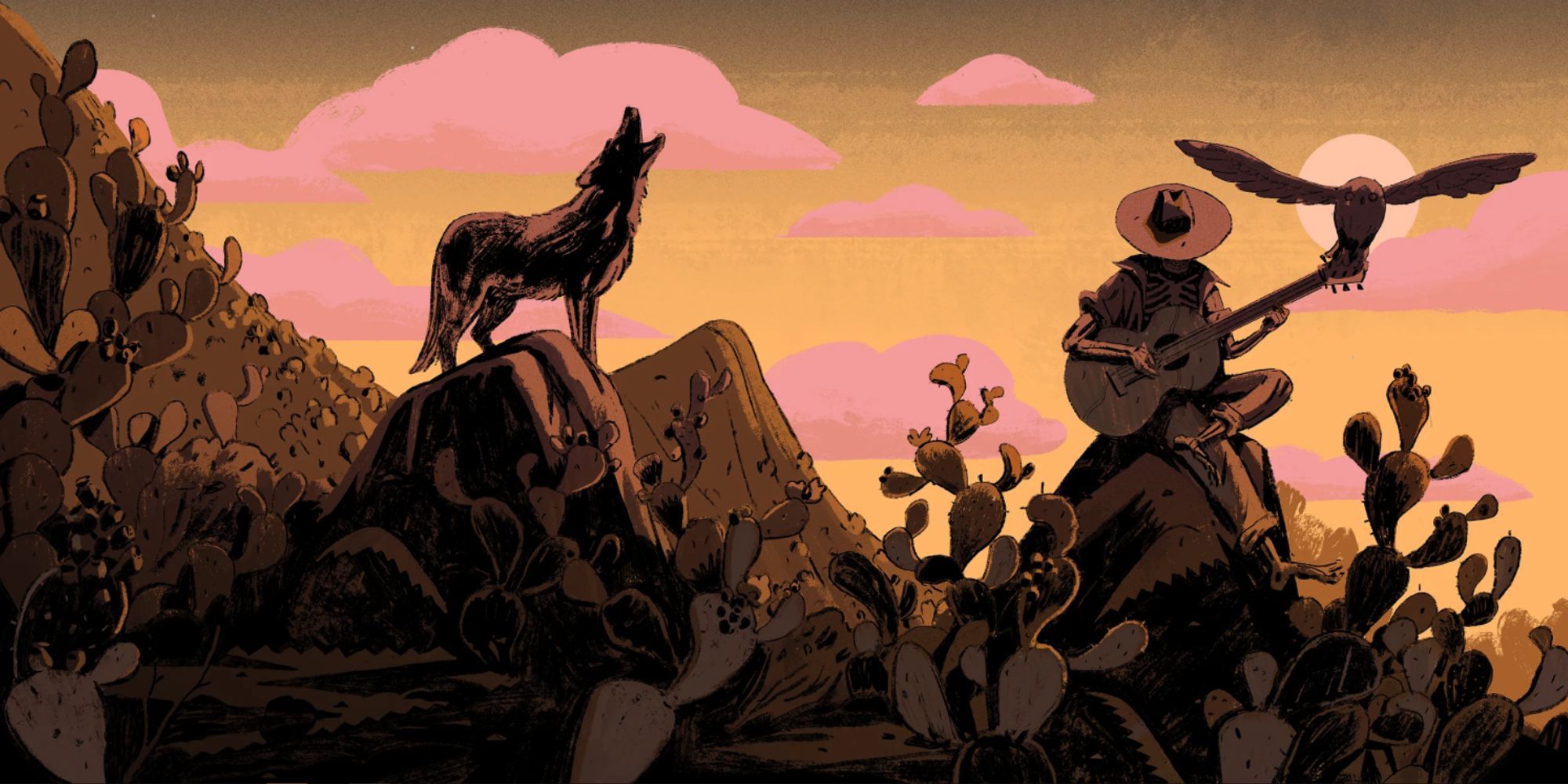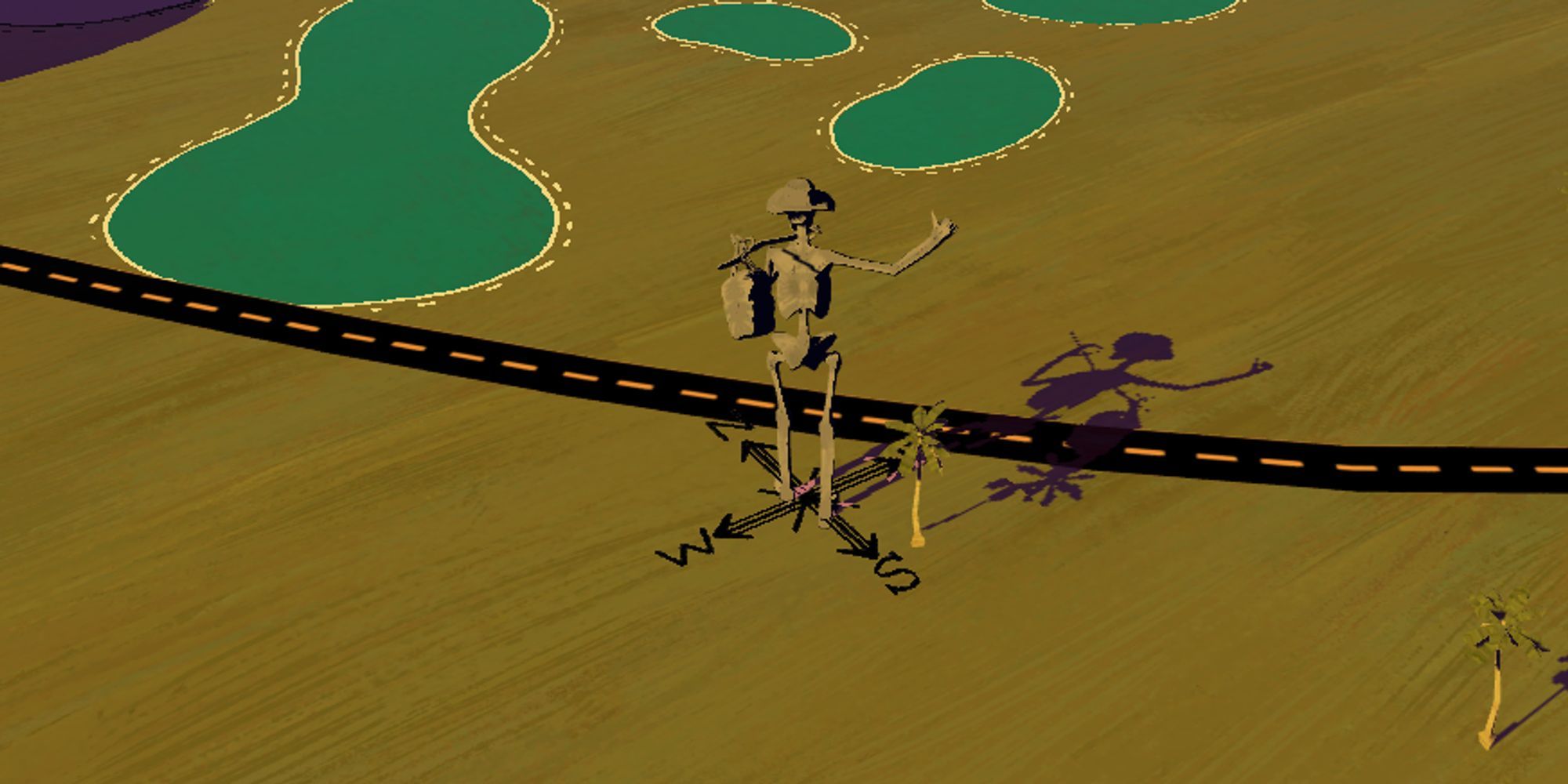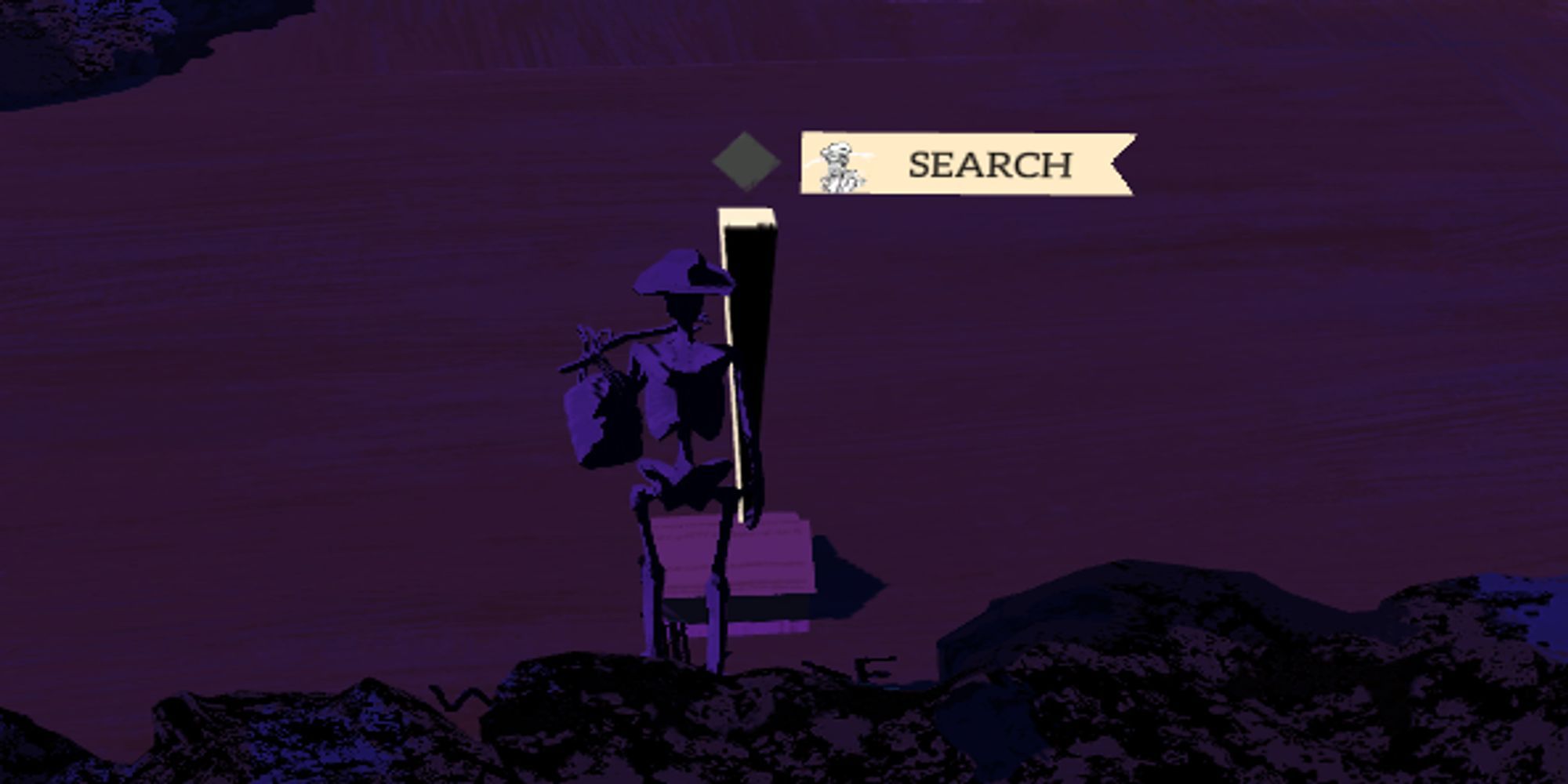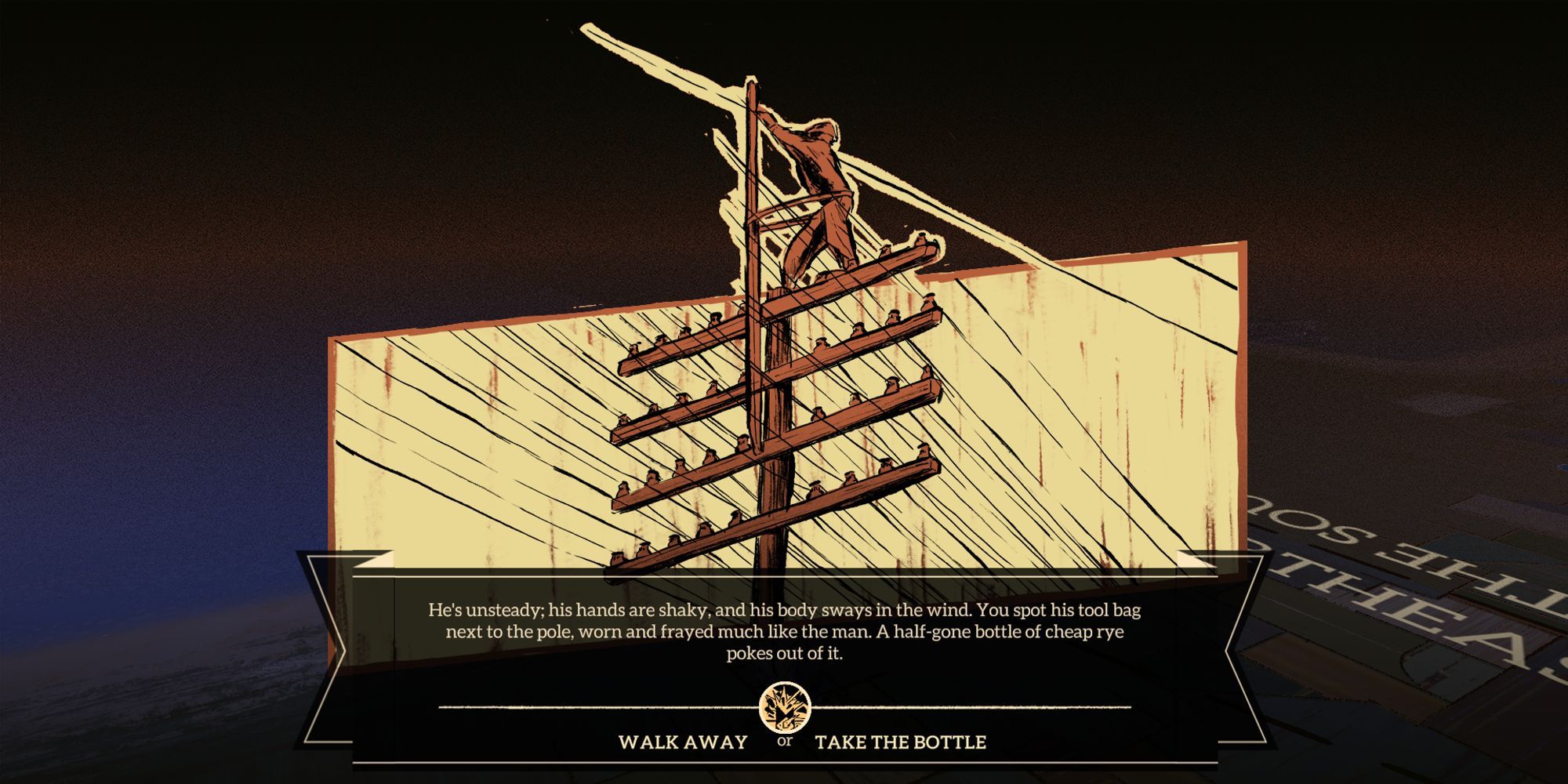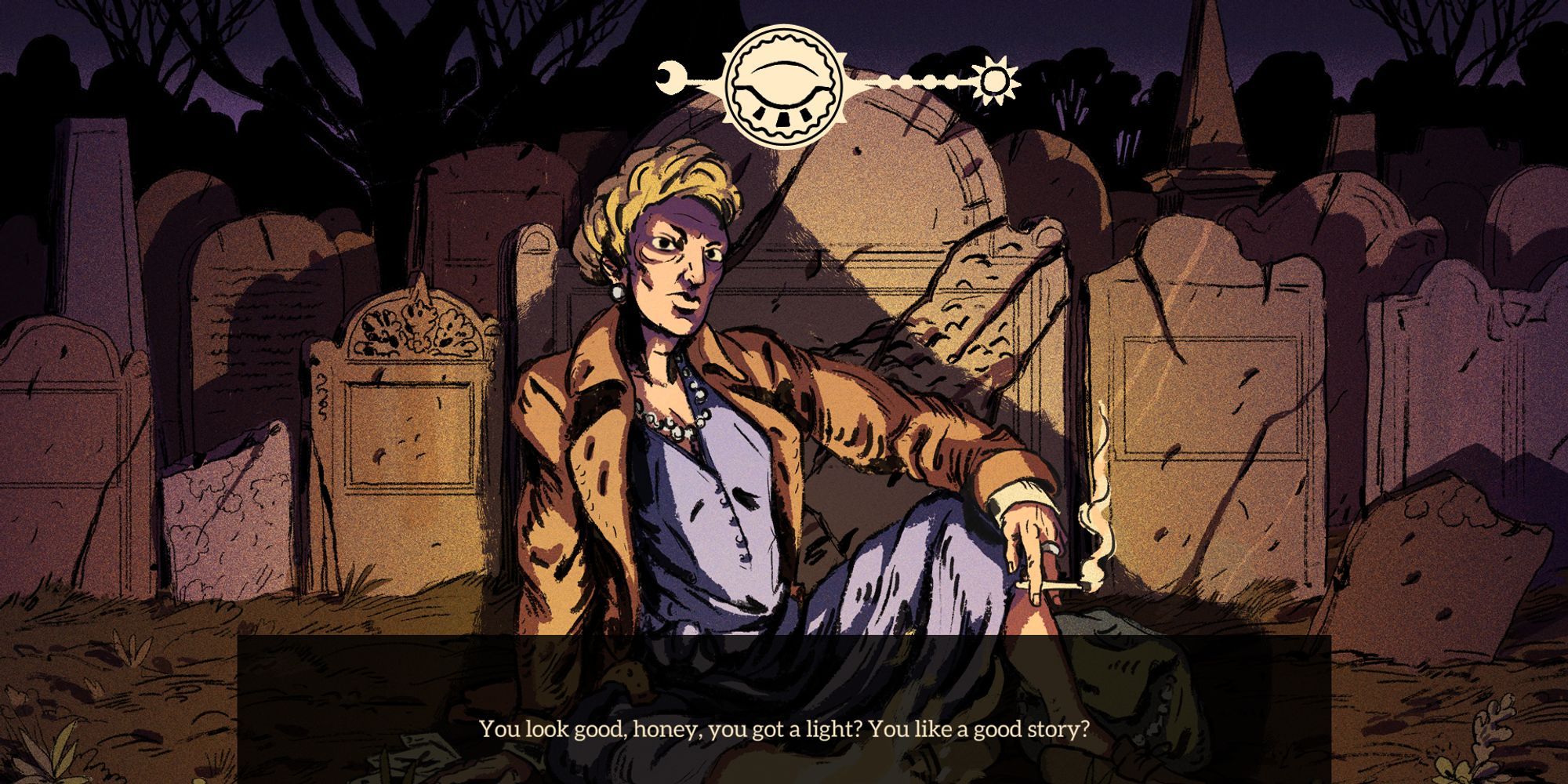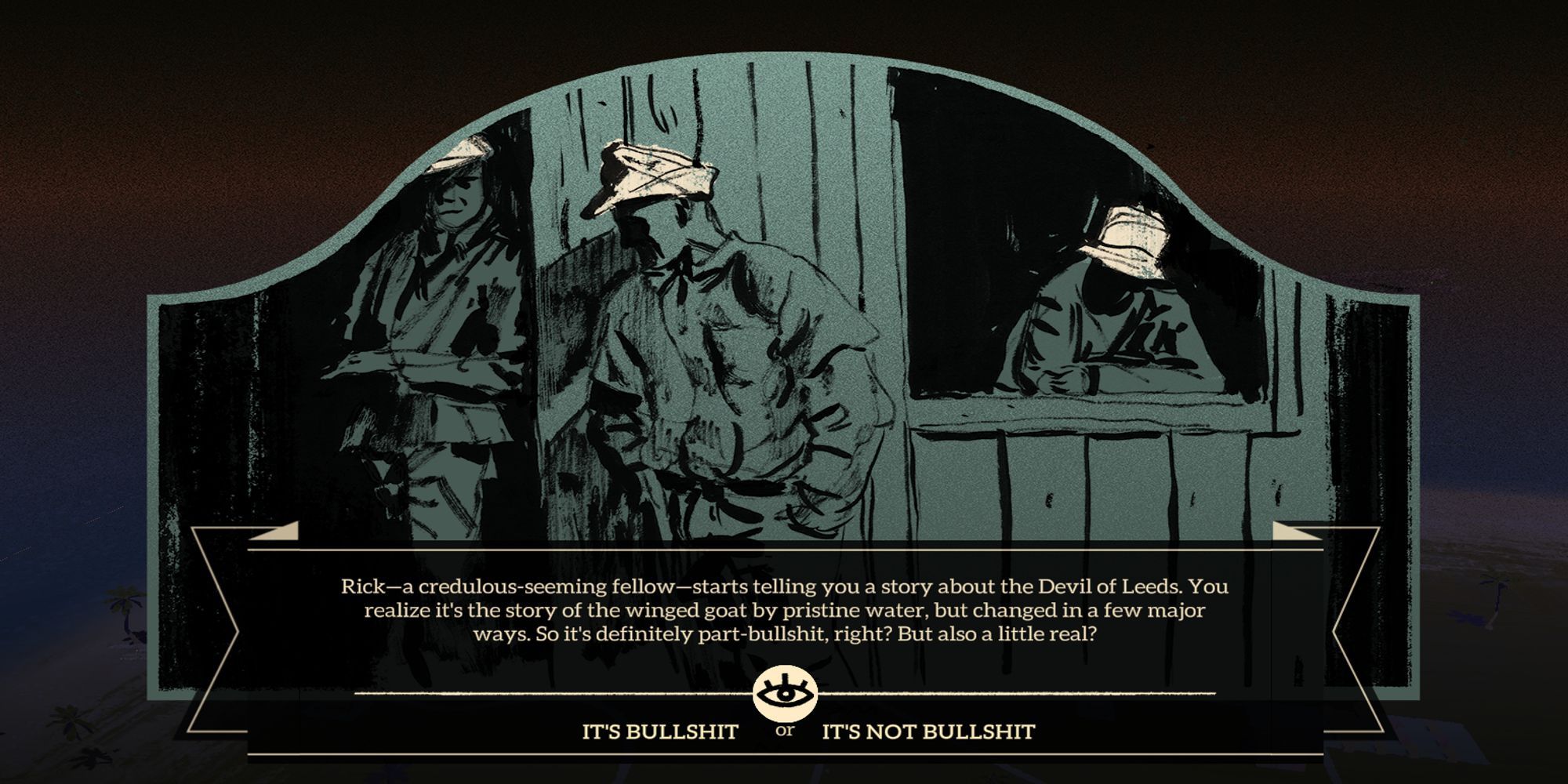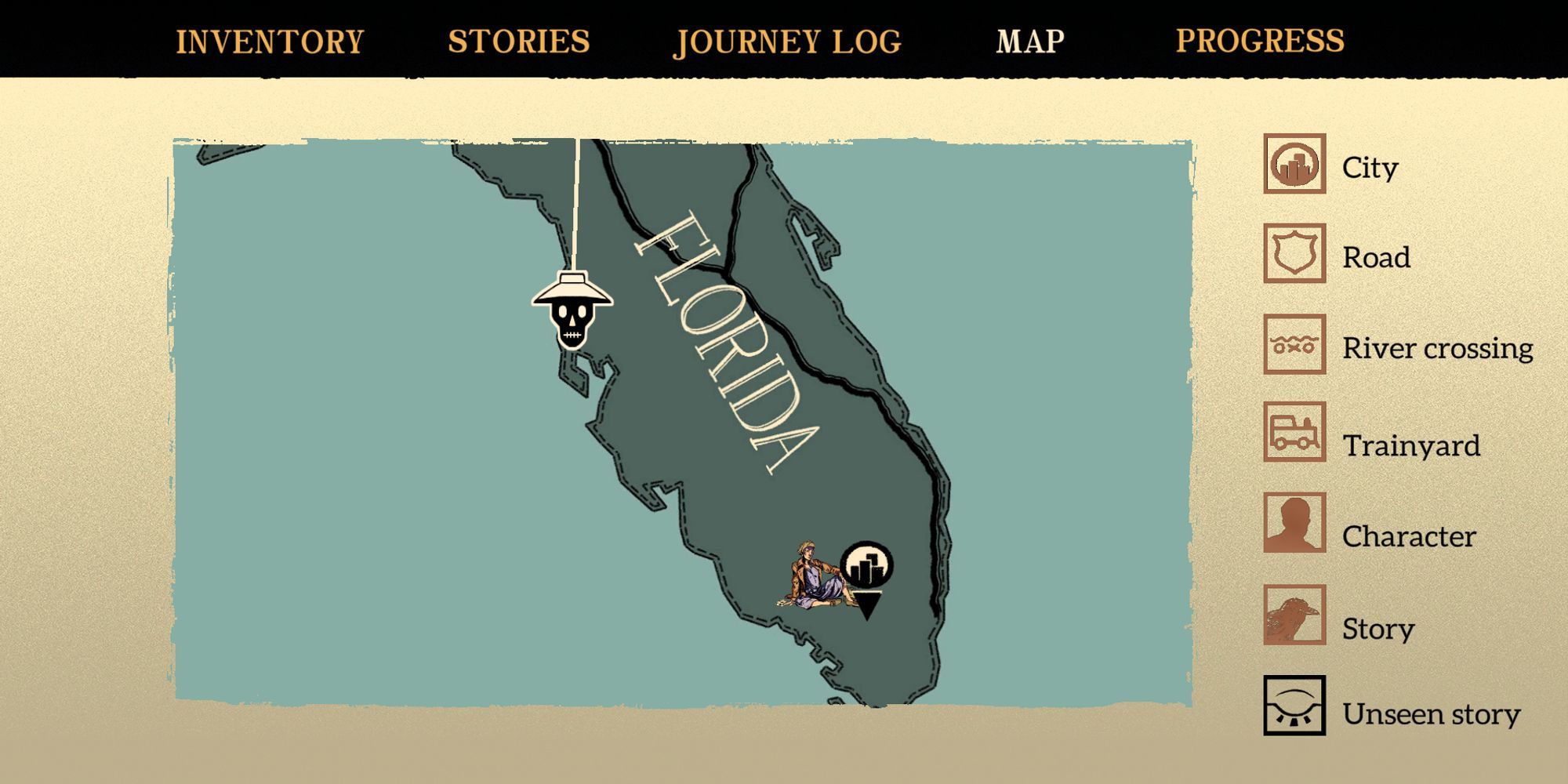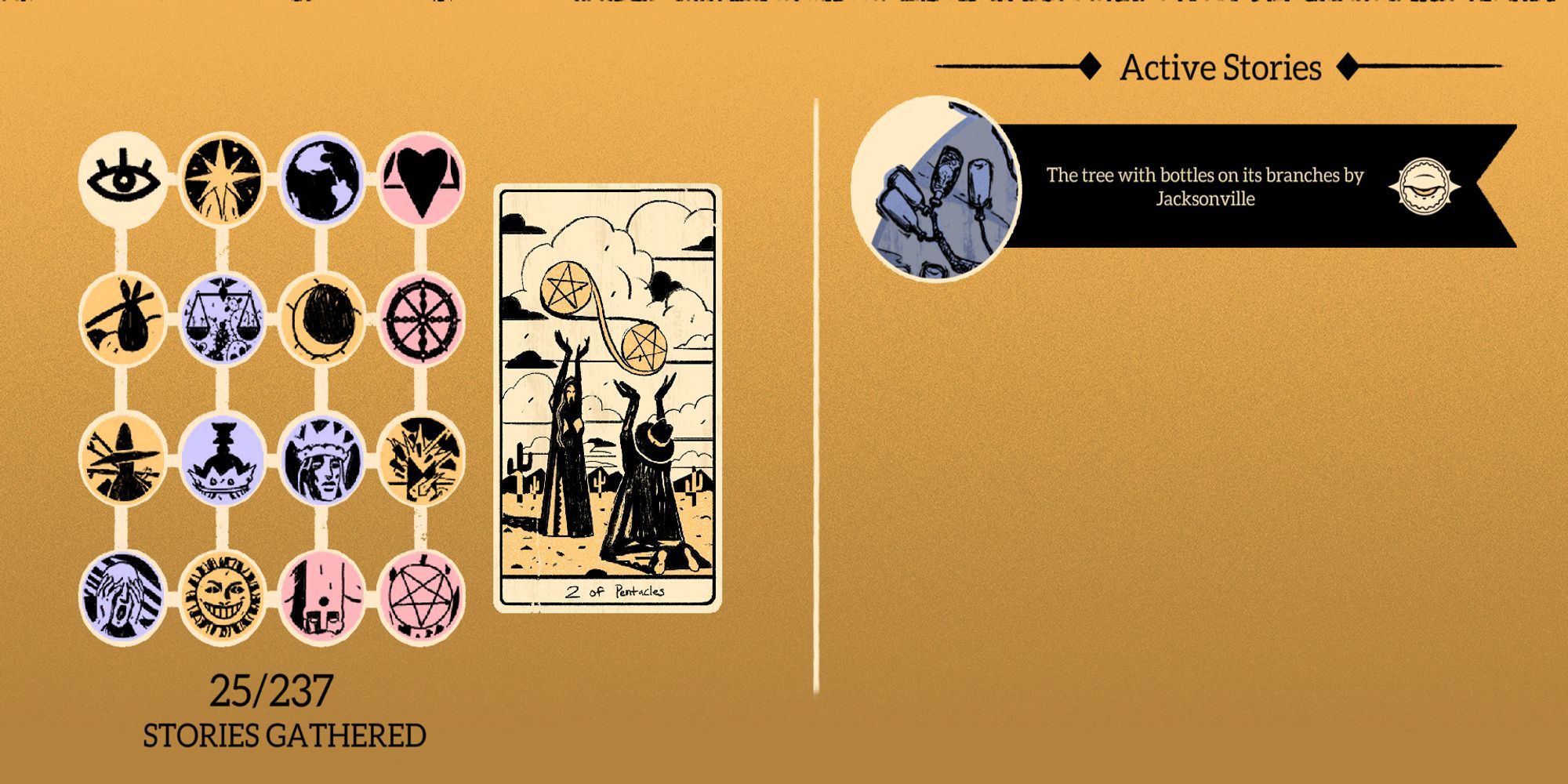Where The Water Tastes Like Wine is a narrative-based adventure game that allows you to explore the rich impact of the history of storytelling. Released in 2018, this game takes place during the Great Depression era in the United States of America. After losing a poker game, you are tasked to travel around the different states and collect stories that you hear from people and experience along the way.
With a creative mix of 2D illustrations and a 3D traveling system that spans across the US, this is an unjustly underrated game and a must-play for anyone who enjoys an experience led mostly by the story of the game.
9 Take The Time To Enjoy The Narration
The narration in this game is outstanding. Not only is the Wolf, who serves as the main narrator, the renowned musician Sting, but the other characters have equally engaging voice actors. Their performances in this game are truly fantastic, with each voice conveying a unique character with a rich history and backstory.
Although it may sometimes seem a drag to take the time to listen to each section of narration, especially if you're impatient or a fast reader, it is well worth taking the time to appreciate the work of the voice cast.
8 The Soundtrack Fits Perfectly
This is one of the best-suited soundtracks for a game, and it is well worth taking time to appreciate the work put into it as you travel from city to city collecting stories, working, and having general encounters with the characters you meet along the way. Composed by Ryan Ike, the songs feature a range of different musicians.
Comprised of genres such as country, folk, blues, and jazz (as well as many more), the soundtrack features iconic sounds that originated and/or were popularized in the United States, making your journey feel truly authentic. If you find yourself enjoying the accompanying music, it is available for separate purchase, or you can also listen to it on most music streaming platforms.
7 There Are Many Ways To Travel
As the map spans the entirety of the United States, there are multiple ways that you can travel across the landscape. The primary mode of travel that you'll be using, in the beginning, will be walking which, although relatively slow, is a solid mode of transport especially if you're heading to a place that's not next to a main road or railway. You can walk faster by using the sprint function to 'whistle' while you walk and match the notes to boost your morale and walk faster.
You are also able to travel by standing at the side of a main road and hitchhiking with the cars that pass you. This is free, but you are restricted to the direction and destination of the cars you hitch a ride with. You are also able to travel by train, where there are two options that you can choose from. You can either buy a ticket with the money you earn from interactions or work, or you can hop a ride on the train at a station. However, if you get caught hopping trains some of your health will be deducted.
6 All Your Interactions Matter
Money, stamina, and health are the three things you need to worry about on your travels, as money allows you to travel from place to place, stamina determines when you need to stop at a campsite and rest and when you lose all of your health you will respawn at the nearest town. Some of the smaller interactions that you can have on your travels can replenish your money, health, or stamina, depending on what the outcome of the situation is.
When you come across some of the buildings that have the option to 'search' them, doing so won't add to your collection of stories but will increase either your wealth, stamina, or health. If all of these are already full you won't gain anything from the interaction, so you should take care only to interact with these when you're running low on something.
5 Dialogue Choices Affect The Story Type
The stories that you collect on your journey are sorted into different categories that are based on the tarot cards and have themes such as Love, Sadness, and Fate. Although some stories are seemingly destined to fit into certain categories no matter your choice of action, some can be affected by the prompts that you choose.
When choosing an option to continue with the narrative dialogue, hovering your cursor or switching between the answers (depending on which platform you're using) will change the icon between the options, telling you which route will lead to which type of story. Paying attention to these, especially if you're short of a certain story type, will certainly be beneficial to your playthrough.
4 Choose The Stories You Tell Carefully
When you rest at a campsite you'll encounter characters who will ask you to tell them a story. These people will ask for specific types of stories that you have collected, and it is up to you to determine which one will suit the situation best out of the ones you have gathered.
If you choose well, you'll progress more with the person and 'open' the eye icon above them. Doing this will mean that the next time you meet this character they will tell you more about themselves, leading to their own bigger personal stories. Take care when choosing which stories to use, though, as you can't reuse the same story on the same character.
3 Don't Be Surprised If Your Stories Change
This game truly displays the beauty of the tradition of oral storytelling, especially that done by traveling people. As such, you can expect your stories to gain extra details or take different turns as the stories are told from one person to another.
When you find a 'Listen To A Story' location, quite often you will hear a tale you once told to a character being told back to you with grand new added details that weren't quite how you remembered the event occurring. This isn't a bad thing, though, as these additions will usually add a much more interesting element to your stories for when you tell them to others later on.
2 Your In-Game Menu Has Everything You Need
To aid you on your travels to collect and tell stories, the in-game menu has everything that you could possibly need while still looking on-theme and visually attractive. You can have a look at the route you've taken on your journey across the states by looking at the Map, which is especially helpful when trying to plan out your future route.
The Stories tab allows you to keep track of the total stories you've collected and how many you have in each category. Your Inventory tab allows you to view the collectibles you've already gathered as well as the ones you've yet to encounter, giving you a rough idea of what is in store. The Journey Log is also incredibly useful to take a look at when you want to remember what order you discovered different stories.
1 There Are Lots Of Stories
As the point of the game is to collect stories, it should be no surprise that there are loads that you will encounter. There are a total of 237 stories that you will collect throughout your journey across the United States.
Although the majority of this number are the shorter or less interesting tales that you gain by chance encounters or witnessing events, some of these will aid you in getting the longer and more meaningful ones when you relay them to certain characters who enjoy them.

-13.jpg)
.jpg)
